Getting rid of mold is a skill every camper needs to know.
It’s not uncommon to find it growing on your tent, and when that happens, you need to react fast.
Mold spreads rapidly, and the last thing you need is to be breathing in the particles while you sleep.
But don’t worry, I’ve got you covered!
In this article, I’ll show you how to clean a tent with mold a few different ways. These methods are easy, safe, and they’ll prolong your tent’s life significantly.
So let’s get started!
Table of Contents
Toggle4 Methods Of Cleaning A Moldy Tent
Depending on the severity of the mold and mildew growth on your tent, there are different methods you can try to get rid of it.
From the simplest to the most complicated, here are four methods that can help you deal with tent mold.
Soap And Water
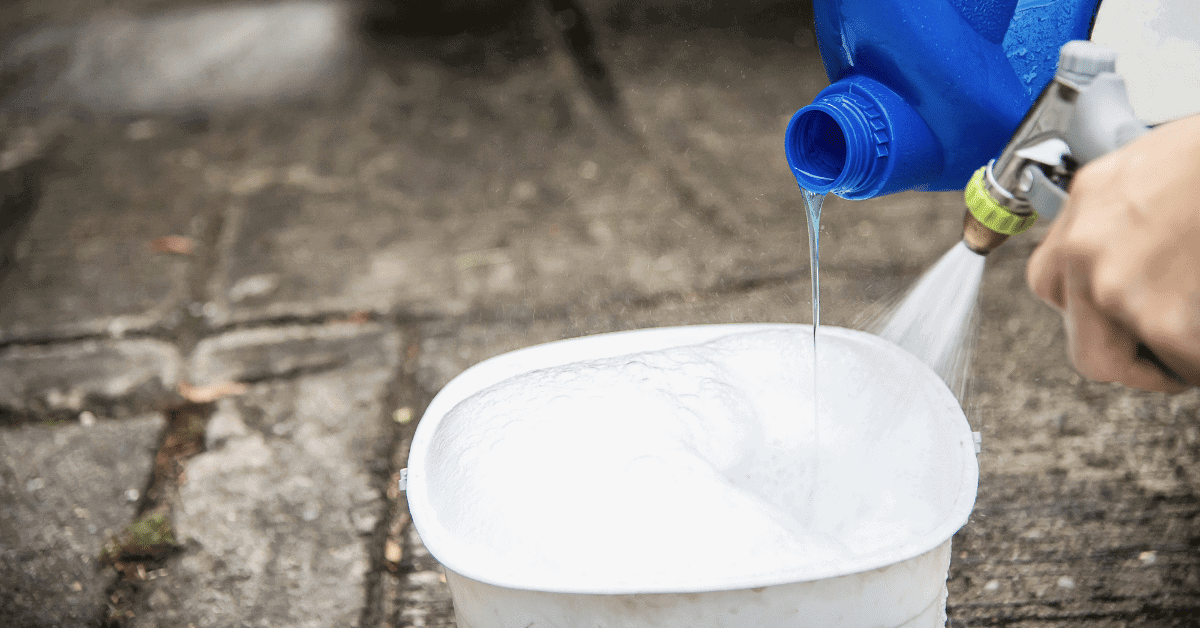
In case of a few mold specks, a little bit of soap and warm water will do the trick.
For spot cleaning, a gentle, non-detergent soap will work. This type of soap has no perfume that would leave a scent on your tent, which in turn would attract bugs the next time you pitch it outside.
Usually, spot cleaning won’t be enough, and you’ll have to soak your moldy tent in water. In that case, you should use a cleaner specially designed for outdoor gear and clothing. This type of product doesn’t leave stains or cause damage to your tent.
Step 1. Brush Off The Tent
First, take a scrub brush and try to remove any loose dirt, dust, and mold particles on the dry tent.
If your tent is made of synthetic fibers, use a soft-bristle brush. For a canvas tent, stiff bristles are a better option.
If you can, always do this outside. You don’t want any mold particles flying around inside your home.
Step 2. Spot Clean Extra Dirty Areas
Grab your soap of choice and mix it in a bowl with a bit of water.
If you’re cleaning a canvas tent, the same brush you used in the first step will work for this, too.
For synthetic tents, on the other hand, you’ll need to use either a cloth or a sponge. In the second case, always use the non-abrasive side of the sponge, or else you might rip the fabric.
Step 3. Soak The Tent
Fill a bucket with lukewarm water. In case you don’t have one large enough to fit your tent, a bathtub will do.
Add a tent cleaning product to the water.
Always read the instructions on the back. Too little product won’t do the job, but too much of it can be damaging to the fabric.
The label should also state how long you should keep the tent submerged for.
Step 4. Rinse Off
Drain the tub and rinse the tent off with water until you remove all the product.
Step 5. Leave Your Tent To Air Dry
Find a spot in your backyard without direct sunlight and pitch your tent to air dry. A pitched tent allows the most airflow, which will let the tent dry in no time.
DIY Vinegar Remedy
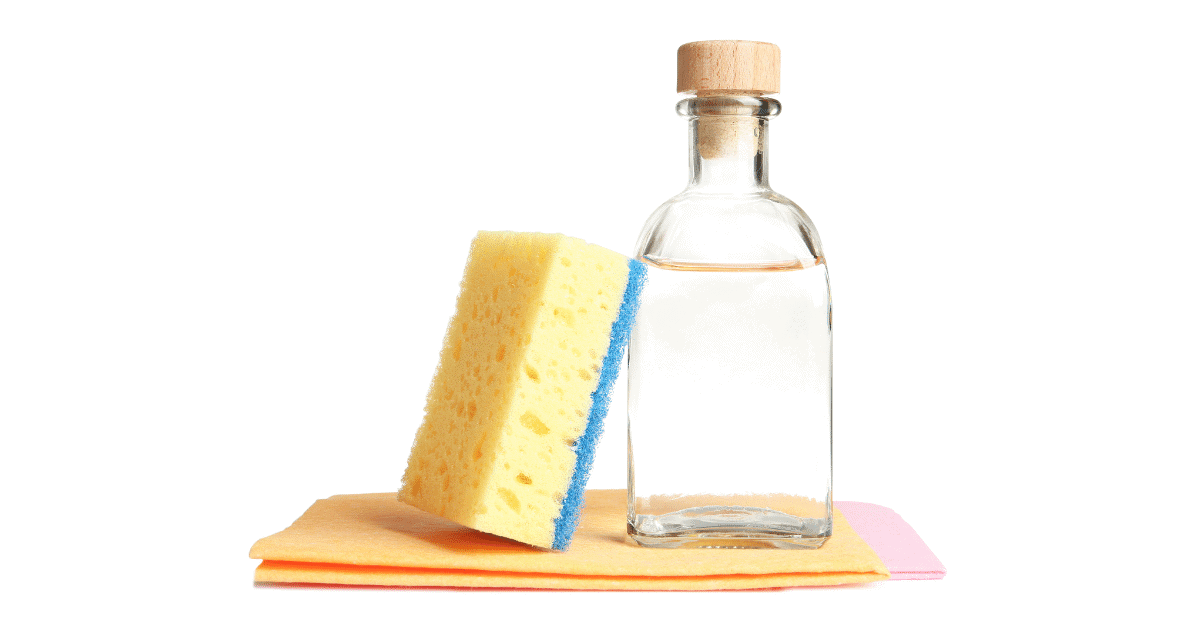
One of the best tricks I’ve learned from my mom is that vinegar is the ultimate multi-purpose cleaner.
From grease to dirt, it tackles even the dirtiest jobs. Mix it with a little bit of water, and you can clean the entire home.
Vinegar proves to be a good choice for removing mold and mildew from fabrics as well.
By this, I mean distilled white vinegar. While apple and wine vinegar could work in theory, they might stain your tent.
For this method, you’re going to need a spray bottle.
Here’s how to clean a tent with mold using vinegar.
Step 1. Mix It With Water
Pour a cup of warm water and a quarter cup of vinegar in a spray bottle.
Shake well so the liquids combine.
Step 2. Apply To Affected Area
Spray the concoction on the areas affected with mold.
It takes a while for the vinegar to work, so let it sit for a bit before proceeding with the next step. Around 15 minutes should be enough.
Step 3. Time To Scrub
After you let it sit for a while, it’s time to get your hands working.
Once again, your cleaning tool of choice depends on the tent material, just like in the soap and water method.
Take your brush, cloth or sponge and use it to scrub moldy areas gently.
Step 4. Let It Air Dry
Vinegar is a magical cleaner that requires no rinsing.
After you’re done, pitch your tent outside and let it dry completely.
Vinegar has somewhat of a strong scent, and you can expect it to stay on for a while.
Theoretically, you could wash your tent to try getting rid of it, but in time, the odor will dissipate anyway – so you don’t have to worry about being left with a smelly tent.
Lemon And Salt Alternative
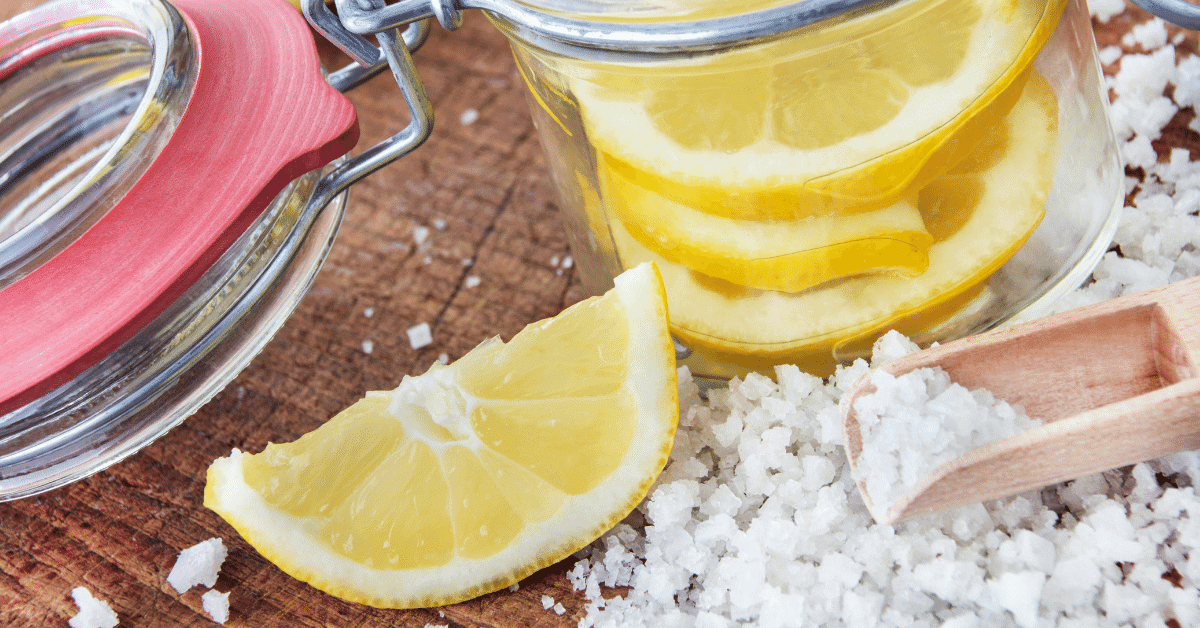
No one is a fan of the smell of vinegar, but some people simply can’t stand it. If that’s you, there’s another natural mold remedy.
By combining lemon juice, salt and water, you get a powerful cleaning solution that you can use to remove mold, among other things. Just like vinegar, these two ingredients allow you to clean basically every room in your house, from the kitchen to the bathroom.
This method works really well thanks to the citric acid this fruit has in high concentrations.
Step 1. Create A Mixture
For this DIY cleaner, you’re going to need one cup of lemon juice and one cup of salt.
Take a bucket, and fill it with a gallon of warm water.
Then, add these two ingredients and stir well.
Step 2. Spot Clean
Dip your cleaning tool into the mixture and scrub the affected areas.
Like with the previous methods, use a cloth or the non-abrasive side of a sponge for synthetic fabrics, and a bristle brush for canvas.
Step 3. Rinse Off
The acid found in lemons can bleach fabric, which is why we shouldn’t risk leaving it on for a long time. Depending on the material, even a few minutes might be enough to cause damage.
Instead of leaving it on to do its job, it’s better to rinse the mixture off right away, and if there’s any mold left, repeat the process again.
Step 4. Air Dry
Let the tent air dry, pitched and away from direct sunlight.
Deep Cleaning
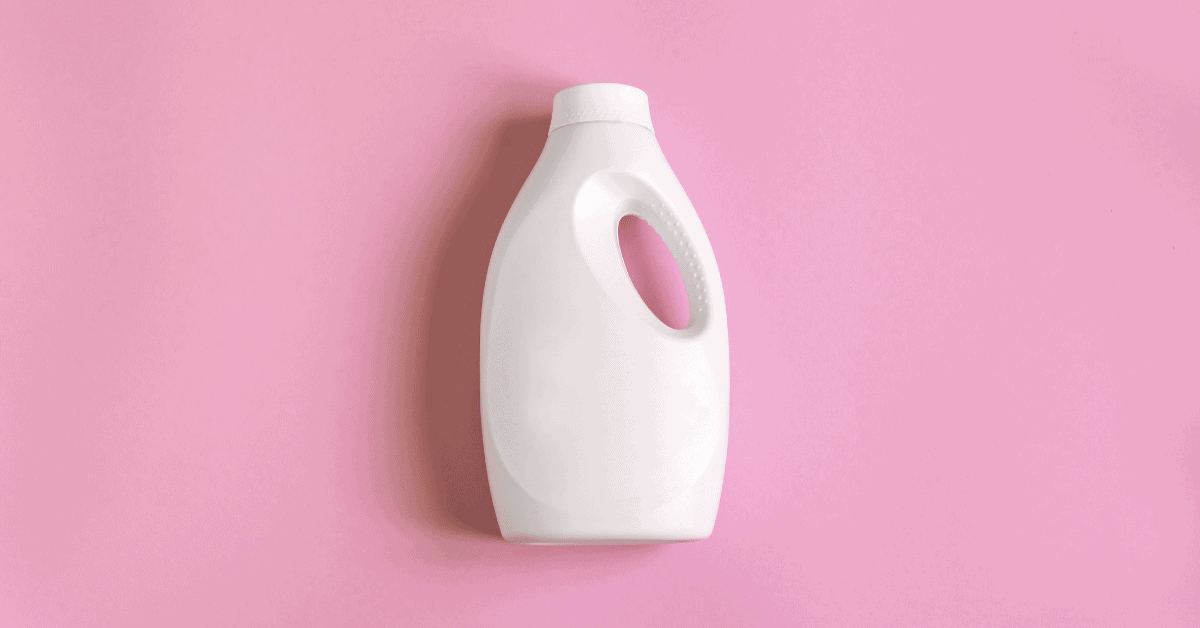
Finally, when no DIY mixtures or mold-removing products seem to work, deep cleaning is your last resort.
For this, you’re going to need an enzyme cleaner.
As the name suggests, these cleaners use enzymes in their formulas to break down dirt and stains. To better understand how they work, let’s take digestion as an example.
It’s a known fact that digestion is a multi-step process, and it begins in our mouth. As you start chewing, your mouth glands start to produce saliva.
And what does saliva do?
Thanks to the enzymes it contains, saliva breaks down food in your mouth, so that you can digest it more easily.
Enzymatic cleaners work on the same principle.
Here’s a step-by-step guide to deep cleaning a tent with this type of product.
Step 1. Fill Your Tub With Lukewarm Water
Follow the instructions on the cleaner.
They usually state both the amount of product and water needed for it to work properly.
Step 2. Let It Sit
Once you’ve added your cleaner to the tub, soak your tent in it.
The key to enzyme magic is time. You need to let it sit so they can do their job.
If you just apply it and immediately wipe it off, it doesn’t get the chance to break down the mold.
The instruction label should also state how long you need to keep your tent soaked in the cleaner for. If you don’t leave it on for long enough, it won’t have enough time to do its magic. Keeping it for too long, on the other hand, might damage the fabric.
Step 3. It’s Rinsing Time
Drain the bathtub and rinse the product residue off of the tent.
Once you’re done, check if all the mold is gone. In some cases, you’ll have to repeat the whole process a few times.
Step 4. Let It Dry
If the mold’s gone, the only thing that’s left is to dry the tent.
Pitch it in a place away from direct sunlight and let it air dry.
Step 5. Check Waterproof Coating
In some cases, it’s possible for this kind of treatment to affect the waterproof coating on your tent.
Before you go on your next camping trip, check if your tent needs additional waterproofing. If it does, you can apply a waterproofing spray to make your tent waterproof again.
How To Prevent Mold From Forming On The Tent
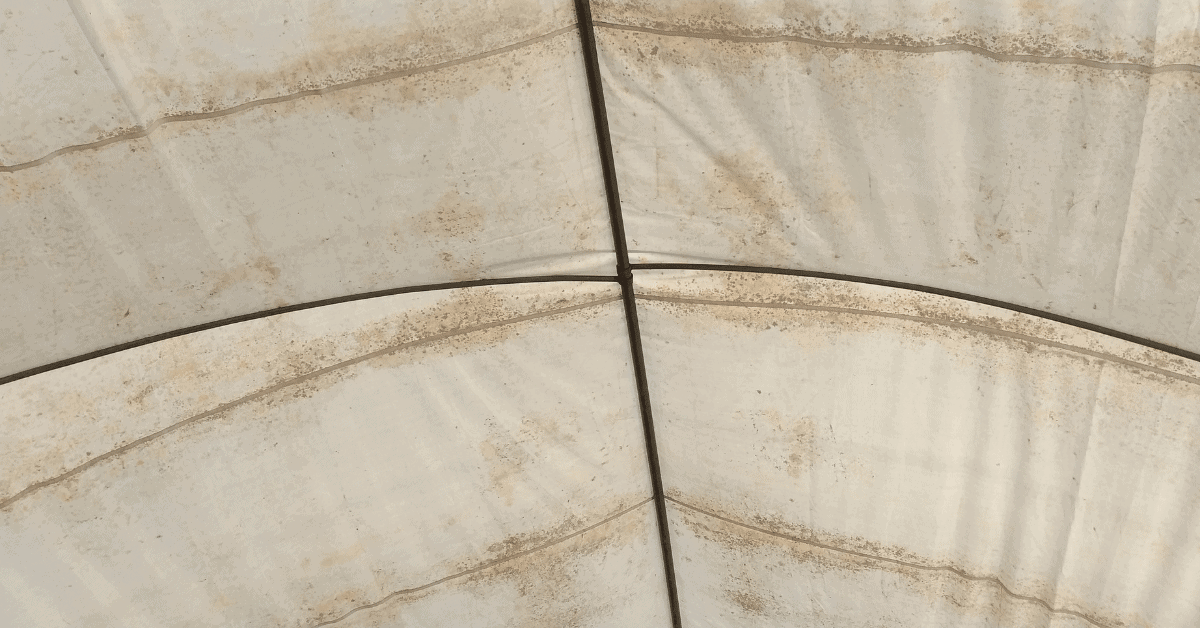
When it comes to mold, a stitch in time saves nine. In other words, prevention is key.
Mold is stubborn, and spreads at the speed of light, so prevention is much easier than the cure.
Mold grows in moist environments, so tents are an ideal place for it to thrive.
Why is that?
Well, when you’re inside a tent, your body emits heat. That heat, along with your breath, creates moisture. This warm air goes up and collides with your tent material. The air outside of the tent is, obviously, cooler than the air inside, and so condensation forms (how to prevent tent condensation in the first place).
The place where moisture gets trapped inside the tent fabric is the place where mold can easily grow.
Generally, you can spot mold by looking for black dots on the tent fabric. Sometimes, they might be blue or green and even appear furry. What’s more, it might have a stale, damp mildew smell.
To prevent mold from appearing, try to avoid making your tent a hospitable environment for it to grow in.
Here’s how you can do that:
- Never pack a wet tent. Before storing your tent away, make sure it’s completely dry.
- Store it in a bag that doesn’t restrict airflow. Either mesh or cotton is fine.
- Keep your tent stored in a cool and dry area, away from direct sunlight.
- To prevent moisture from collecting inside the tent while camping, keep the windows and doors open whenever you can.
To Sum Things Up
There are a few different ways you can remove mold, depending on how much it has grown on your tent.
A few mold dots can easily be removed with substances you have at home, like vinegar or lemon and salt.
For stubborn mold problems, you might have to resort to deep cleaning.
In any case, now that you know how mold forms, you can do your best to prevent it from growing on your tent in the first place. An ounce of prevention is worth a pound of cure.
More on Tent & Gear Maintenance:
- How To Clean A Tent: Mastering the Art of Washing Your Tent
- How to Fix a Broken Tent Pole in a Pinch (Tips & Tricks)
- Can You Wash A Tent In A Washing Machine? (How to Safely Wash It!)
- How To Fix A Tent Zipper (Tips and Tricks)
- How To Waterproof A Canvas Tent – 2 Simple Hacks To Try At Home
- How To Clean A Swiss Army Knife (DIY Like a Pro)
- How To Wash A Hammock 2 Ways – A Guide To Machine & Hand Washing


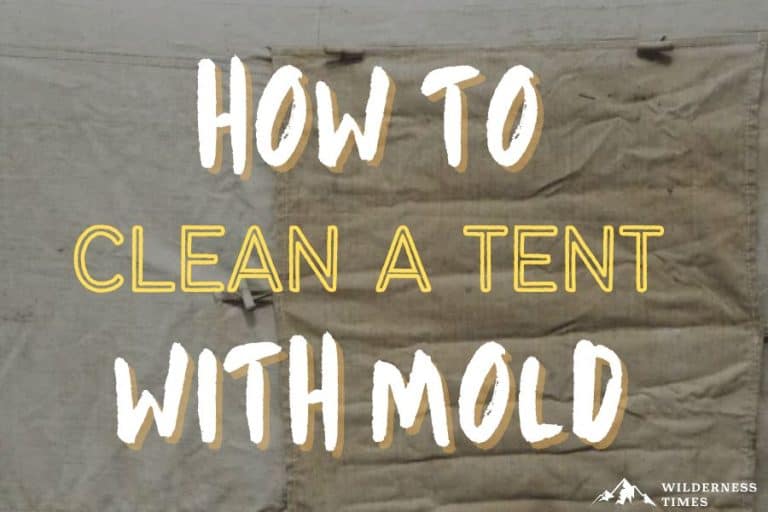
1 thought on “How To Clean A Tent With Mold – The Ultimate Guide”
Thanks. I will get to it this week mold on one of my tents